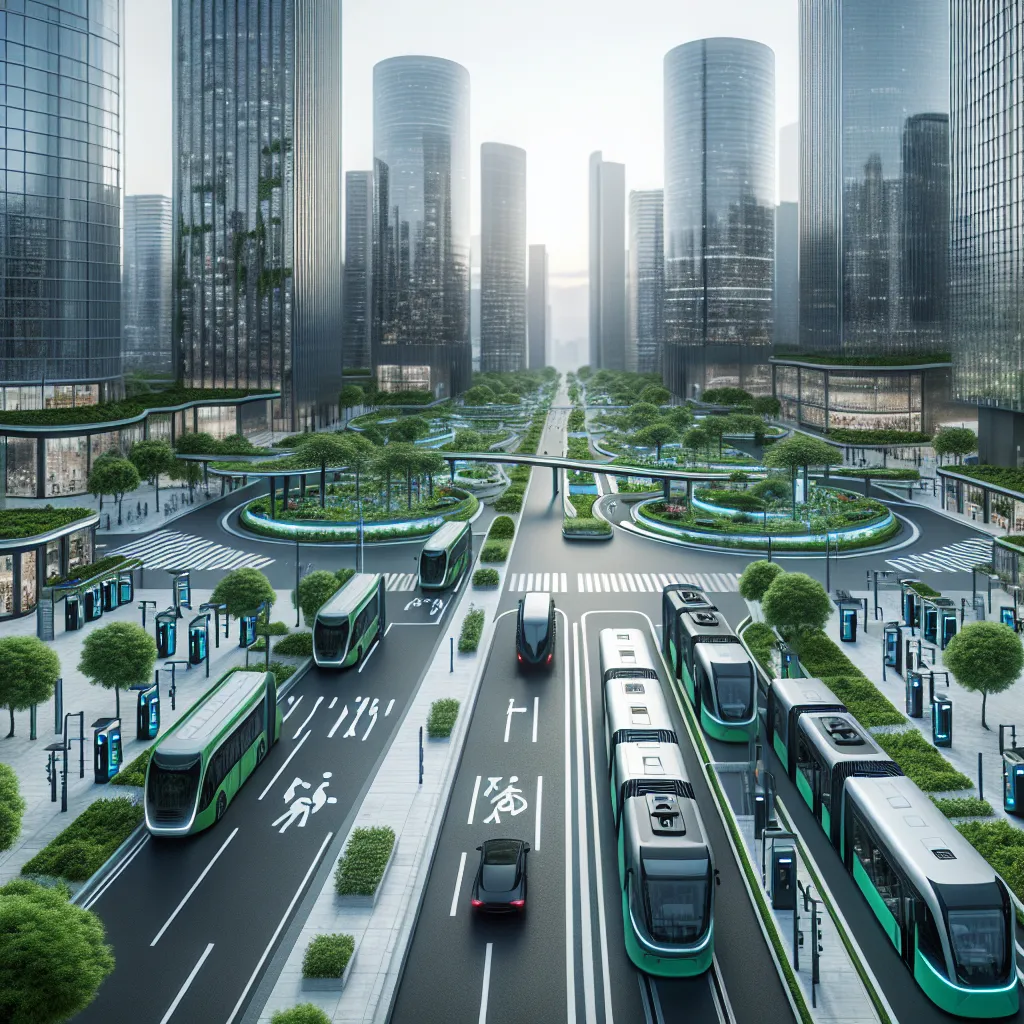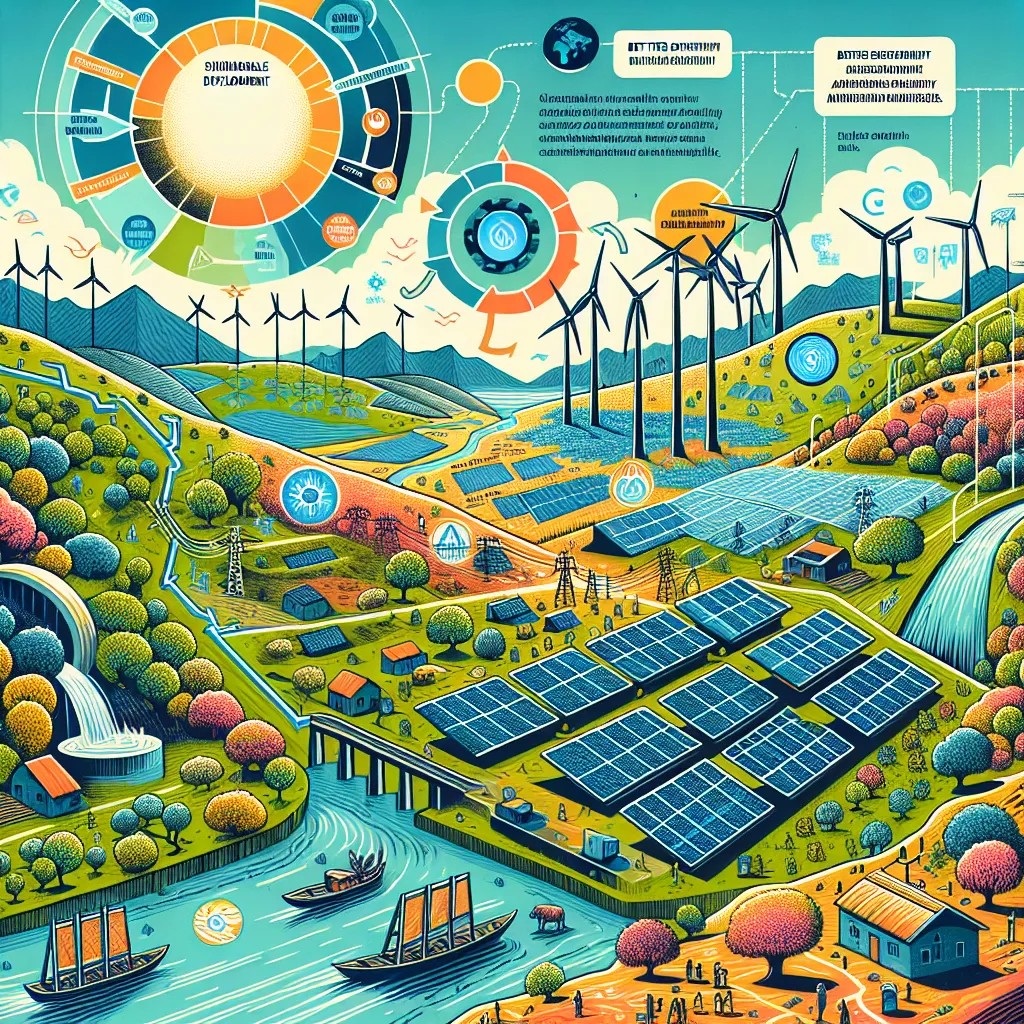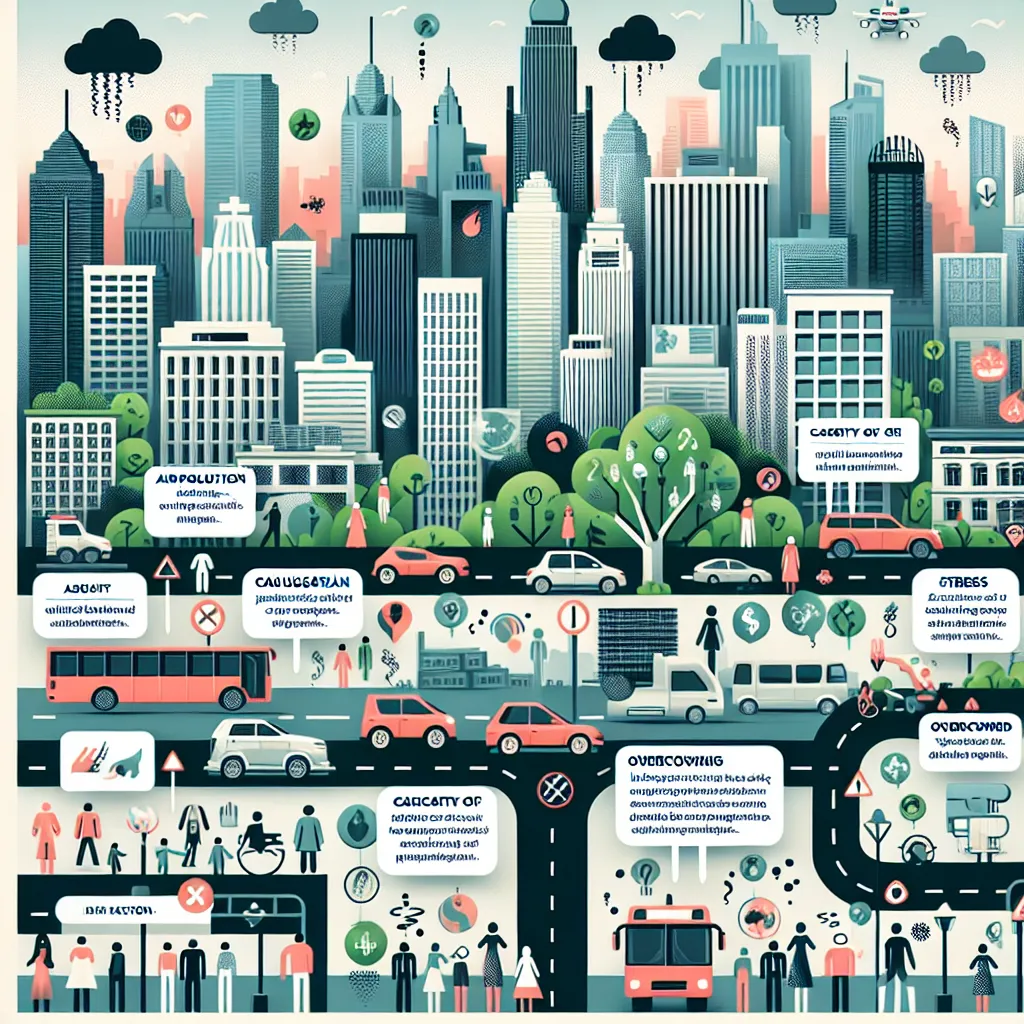Are you preparing for the IELTS Reading test and looking for practice materials on urban development and sustainable transportation? Look no further! This comprehensive IELTS Reading practice test focuses on the fascinating topic of how electric public transport is transforming our cities. As an experienced IELTS instructor, I’ve crafted this test to closely resemble the actual IELTS Reading exam, complete with varying difficulty levels and a range of question types. Let’s dive in and enhance your reading skills while exploring this crucial aspect of modern urban planning.
Nội dung bài viết
- Introduction to the Test
- Passage 1 (Easy Text): The Rise of Electric Buses in Urban Areas
- Questions 1-7
- Questions 8-13
- Passage 2 (Medium Text): Electric Trams: Reviving an Old Technology for Modern Cities
- Questions 14-20
- Questions 21-26
- Passage 3 (Hard Text): The Synergy of Electric Public Transport and Smart City Initiatives
- Questions 27-32
- Questions 33-40
- Answer Key
- Passage 1
- Passage 2
- Passage 3
 Electric public transport reshaping cities
Electric public transport reshaping cities
Introduction to the Test
This IELTS Reading practice test consists of three passages of increasing difficulty, mirroring the structure of the actual IELTS exam. Each passage is followed by a set of questions designed to test your comprehension, analytical skills, and ability to locate specific information. The texts cover various aspects of electric public transport and its impact on urban development, from basic concepts to more complex discussions of policy and technology.
Passage 1 (Easy Text): The Rise of Electric Buses in Urban Areas
Electric buses are becoming an increasingly common sight in cities around the world. These vehicles, powered by rechargeable batteries instead of fossil fuels, offer numerous benefits to urban areas. Firstly, they produce zero emissions at the point of use, which significantly improves air quality in congested city centers. This reduction in pollution has immediate health benefits for city dwellers, particularly those with respiratory conditions.
Moreover, electric buses are much quieter than their diesel counterparts, reducing noise pollution in urban environments. This acoustic advantage creates more pleasant streets for both residents and visitors. The reduced noise levels can also contribute to lower stress levels among city inhabitants, potentially improving overall quality of life.
From an economic perspective, while the initial investment in electric buses may be higher, they often prove more cost-effective in the long run. Electric buses have lower operating costs due to cheaper electricity prices compared to diesel fuel. Additionally, they require less maintenance as they have fewer moving parts than traditional combustion engine vehicles.
Many cities are also finding that the introduction of electric buses aligns well with their sustainability goals. As countries strive to meet climate change targets, transitioning public transport fleets to electric vehicles represents a tangible step towards reducing carbon emissions. This shift not only helps cities meet environmental objectives but also enhances their image as forward-thinking, eco-friendly destinations.
The implementation of electric buses often goes hand-in-hand with broader urban planning initiatives. For instance, the installation of charging infrastructure can be integrated with smart city projects, enhancing the overall efficiency of urban transportation systems. Some cities are experimenting with dynamic charging systems, where buses can be charged while in motion, further increasing their operational efficiency.
As technology continues to advance, the range and performance of electric buses are improving rapidly. Latest generation models can now operate for entire days on a single charge, addressing earlier concerns about reliability and range anxiety. This progress is making electric buses an increasingly viable option for cities of all sizes, from small towns to major metropolises.
In conclusion, the rise of electric buses in urban areas represents a significant shift in how cities approach public transportation. By offering environmental, health, and economic benefits, these vehicles are not just changing how people move around cities, but are also contributing to broader urban transformation efforts.
Questions 1-7
Do the following statements agree with the information given in the passage?
Write:
TRUE if the statement agrees with the information
FALSE if the statement contradicts the information
NOT GIVEN if there is no information on this
- Electric buses produce no emissions while operating in cities.
- Diesel buses are louder than electric buses.
- The maintenance costs for electric buses are higher than for diesel buses.
- All countries have already met their climate change targets by using electric buses.
- Some cities are testing systems where electric buses can be charged while moving.
- Electric buses can only operate in large cities.
- The latest electric bus models can run for 24 hours without needing to be recharged.
Questions 8-13
Complete the sentences below.
Choose NO MORE THAN TWO WORDS from the passage for each answer.
- The reduction of noise pollution from electric buses can lead to lower __ levels among urban residents.
- While the __ __ for electric buses might be high, they are often more economical over time.
- The shift to electric buses helps cities achieve their __ __.
- Charging infrastructure for electric buses can be integrated with __ __ __ to improve urban transportation efficiency.
- Earlier concerns about electric buses included reliability and __ __.
- The introduction of electric buses is contributing to broader __ __ efforts in cities.
Passage 2 (Medium Text): Electric Trams: Reviving an Old Technology for Modern Cities
The resurgence of electric trams in urban transportation planning marks a fascinating blend of historical nostalgia and cutting-edge sustainability. Once a common sight in many cities during the early 20th century, trams, also known as streetcars, were largely phased out in favor of buses and private automobiles. However, the pressing need for sustainable urban transport solutions has led to a reevaluation of this efficient and environmentally friendly mode of transportation.
Modern electric trams offer several advantages that make them particularly suited to contemporary urban environments. Firstly, they provide a high-capacity transport option that can move large numbers of passengers efficiently, especially during peak hours. This capacity to alleviate congestion is crucial in densely populated urban areas where road space is at a premium. Unlike buses, trams run on dedicated tracks, which means they are not subject to the vagaries of traffic and can maintain more reliable schedules.
From an environmental perspective, electric trams are remarkably clean. They produce zero direct emissions, contributing significantly to the reduction of air pollution in city centers. This aspect is particularly important given the growing awareness of the health impacts of poor air quality in urban areas. Moreover, the electrification of tram networks allows for the integration of renewable energy sources, further enhancing their environmental credentials.
The implementation of tram systems often catalyzes wider urban regeneration projects. The permanence of tram infrastructure sends a strong signal to developers and businesses, often leading to increased investment along tram routes. This can result in the revitalization of urban corridors, with new residential and commercial developments springing up around tram stops. Such transit-oriented development can help create more compact, walkable neighborhoods, reducing reliance on private cars and fostering a sense of community.
Aesthetically, modern trams can significantly enhance the urban landscape. Their sleek, low-floor designs not only make them accessible to all users but also contribute to a modern, forward-looking cityscape. Many cities have used the introduction of tram systems as an opportunity to redesign streets, creating more pedestrian-friendly environments with wider sidewalks, cycle lanes, and green spaces.
However, the reintroduction of trams is not without challenges. The initial capital outlay for tram infrastructure can be substantial, often requiring significant public investment. There are also logistical challenges in retrofitting tram lines into existing urban fabric, particularly in historic city centers where space is limited and underground utilities may need to be relocated.
Despite these challenges, many cities are finding that the long-term benefits of trams outweigh the initial hurdles. Trams have a longer operational life than buses and can move more people more efficiently, making them cost-effective over time. They also tend to be popular with users, often seen as more comfortable and attractive than buses, which can help increase public transport ridership overall.
In conclusion, the revival of electric trams represents a compelling solution for cities looking to create more sustainable, efficient, and livable urban environments. By combining the best of past urban planning with modern technology and environmental awareness, trams are once again becoming a key component in reshaping our cities for the better.
Questions 14-20
Choose the correct letter, A, B, C, or D.
-
According to the passage, electric trams were:
A) Never used in cities before
B) Popular in the early 20th century
C) Always more popular than buses
D) Invented in the 21st century -
One advantage of modern trams over buses is that they:
A) Are cheaper to operate
B) Can carry more passengers
C) Run on dedicated tracks
D) Are more environmentally friendly -
The implementation of tram systems often leads to:
A) Decreased property values
B) Less investment in urban areas
C) Urban regeneration projects
D) Reduced public transport use -
The passage suggests that tram infrastructure:
A) Is easy to install in all cities
B) Requires significant initial investment
C) Is cheaper than bus infrastructure
D) Only works in modern cities -
According to the text, modern trams contribute to the urban landscape by:
A) Increasing road space for cars
B) Creating more parking spaces
C) Enhancing pedestrian-friendly environments
D) Building more shopping malls -
The main challenge in reintroducing trams to cities is:
A) Lack of public interest
B) High operational costs
C) Initial capital outlay and logistical issues
D) Environmental concerns -
The passage concludes that electric trams are:
A) Only suitable for large cities
B) Less efficient than buses
C) A potential solution for sustainable urban transport
D) Too expensive for most cities to consider
Questions 21-26
Complete the summary below.
Choose NO MORE THAN TWO WORDS from the passage for each answer.
Electric trams are experiencing a revival in modern urban planning. They offer a high-capacity transport option that can effectively reduce 21)__ in busy city centers. Trams are environmentally friendly, producing no direct emissions and potentially using 22)__ __ for power. The implementation of tram systems often leads to 23)__ __ along their routes, encouraging the creation of compact, walkable neighborhoods. Modern trams also enhance the 24)__ __ with their sleek designs. While the 25)__ __ __ for tram infrastructure can be high, many cities find that the long-term benefits, including longer operational life and higher 26)__ __, make trams a worthwhile investment.
Passage 3 (Hard Text): The Synergy of Electric Public Transport and Smart City Initiatives
The integration of electric public transport systems with smart city technologies is ushering in a new era of urban mobility and sustainability. This synergy represents a paradigm shift in how cities approach transportation, energy management, and urban planning. By leveraging the capabilities of both electric vehicles and intelligent urban infrastructure, cities are not only addressing immediate transportation needs but also laying the groundwork for more efficient, sustainable, and livable urban environments.
At the core of this integration is the concept of the Internet of Things (IoT), which allows for the seamless connection and communication between various urban systems. In the context of electric public transport, IoT enables real-time monitoring and optimization of vehicle performance, energy consumption, and passenger flows. For instance, smart sensors on electric buses or trams can continuously transmit data on battery levels, passenger numbers, and location, allowing for dynamic adjustments to routes and schedules to maximize efficiency and meet demand.
This data-driven approach extends to the charging infrastructure as well. Smart charging stations can communicate with vehicles and the power grid, enabling intelligent load balancing and demand response mechanisms. During off-peak hours, excess renewable energy can be stored in the batteries of idle electric vehicles, effectively turning the public transport fleet into a distributed energy storage system. This not only enhances the stability of the power grid but also increases the utilization of renewable energy sources, further reducing the carbon footprint of urban transportation.
The integration of electric public transport with smart city initiatives also facilitates the development of Mobility as a Service (MaaS) platforms. These platforms aggregate various transportation options, including electric buses, trams, shared bikes, and ride-hailing services, into a single, user-friendly interface. By providing real-time information and seamless payment options, MaaS encourages multimodal travel and reduces reliance on private vehicles. The electrification of public transport plays a crucial role in this ecosystem, offering clean and efficient options for longer urban journeys.
Furthermore, the data generated by electric public transport systems can inform broader urban planning decisions. Analysis of travel patterns and energy consumption can help city planners optimize land use, identify areas for transit-oriented development, and improve overall urban design. For example, areas with high electric bus or tram usage might be prioritized for pedestrianization or the development of mixed-use districts, fostering more sustainable urban forms.
The synergy between electric public transport and smart city technologies also opens up new possibilities for dynamic pricing and incentive schemes. By analyzing real-time data on traffic conditions, air quality, and energy demand, cities can implement flexible fare structures that encourage off-peak travel or the use of less congested routes. Such schemes can help distribute passenger loads more evenly throughout the day, reducing peak-hour congestion and improving the overall efficiency of the transport network.
However, the implementation of these integrated systems is not without challenges. Cybersecurity concerns are paramount, as the increasing connectivity of urban transport systems creates potential vulnerabilities to cyber attacks. Ensuring the privacy of passenger data while leveraging it for system optimization requires careful balancing. Additionally, the interoperability of different systems and standards across various transport modes and technology platforms remains a significant technical hurdle.
There are also social equity considerations to be addressed. While smart, integrated electric transport systems offer numerous benefits, there is a risk of creating a digital divide, where those without access to smartphones or digital payment methods might be disadvantaged. Cities must ensure that the benefits of these advanced systems are accessible to all residents, regardless of their technological literacy or economic status.
Despite these challenges, the potential benefits of integrating electric public transport with smart city initiatives are immense. This convergence promises not only to revolutionize urban mobility but also to contribute significantly to sustainability goals, improve quality of life, and enhance the overall resilience of cities. As technology continues to evolve and cities gain more experience in implementing these integrated systems, we can expect to see increasingly sophisticated and effective urban transport solutions that reshape our cities for the better.
Questions 27-32
Choose the correct letter, A, B, C, or D.
-
According to the passage, the Internet of Things (IoT) in electric public transport allows for:
A) Reduced ticket prices
B) Faster travel times
C) Real-time monitoring and optimization
D) Elimination of all traffic congestion -
Smart charging stations for electric vehicles can:
A) Generate renewable energy
B) Replace traditional power plants
C) Communicate with vehicles and the power grid
D) Eliminate the need for batteries in vehicles -
Mobility as a Service (MaaS) platforms:
A) Focus exclusively on electric vehicles
B) Aggregate various transportation options
C) Replace all public transportation systems
D) Increase reliance on private vehicles -
The data generated by electric public transport systems can be used to:
A) Predict individual travel behaviors
B) Eliminate the need for urban planning
C) Inform broader urban planning decisions
D) Justify the removal of all non-electric vehicles -
Dynamic pricing in public transport aims to:
A) Increase revenue for transport companies
B) Make public transport more expensive
C) Encourage off-peak travel and use of less congested routes
D) Eliminate the need for paper tickets -
One of the main challenges in implementing integrated smart transport systems is:
A) Cybersecurity concerns
B) The high cost of electricity
C) Lack of public interest
D) The need for wider roads
Questions 33-40
Complete the summary below.
Choose NO MORE THAN THREE WORDS from the passage for each answer.
The integration of electric public transport with smart city technologies represents a 33)__ __ in urban mobility and sustainability. This approach utilizes the 34)__ __ __ to connect various urban systems, allowing for real-time monitoring and optimization. Smart charging stations enable 35)__ __ __ and can turn idle vehicles into a distributed energy storage system. The development of 36)__ __ __ platforms encourages multimodal travel and reduces dependence on private vehicles.
Data from electric transport systems can inform urban planning decisions, potentially leading to more 37)__ __ __ . The implementation of 38)__ __ schemes can help manage passenger loads more effectively. However, this integration faces challenges such as 39)__ __ and the risk of creating a 40)__ __ among residents with varying levels of technological access.
Answer Key
Passage 1
- TRUE
- TRUE
- FALSE
- NOT GIVEN
- TRUE
- FALSE
- NOT GIVEN
- stress
- initial investment
- sustainability goals
- smart city projects
- range anxiety
- urban transformation
Passage 2
- B
- C
- C
- B
- C
- C
- C
- congestion
- renewable energy
- urban regeneration
- urban landscape
- initial capital outlay
- public transport
Passage 3
- C
- C
- B
- C
- C
- A
- paradigm shift
- Internet of Things
- intelligent load balancing
- Mobility as a Service
- sustainable urban forms
- dynamic pricing
- cybersecurity concerns
- digital divide
This IELTS Reading practice test on “How Electric Public Transport is Reshaping Cities” covers a wide range of aspects related to urban development an


